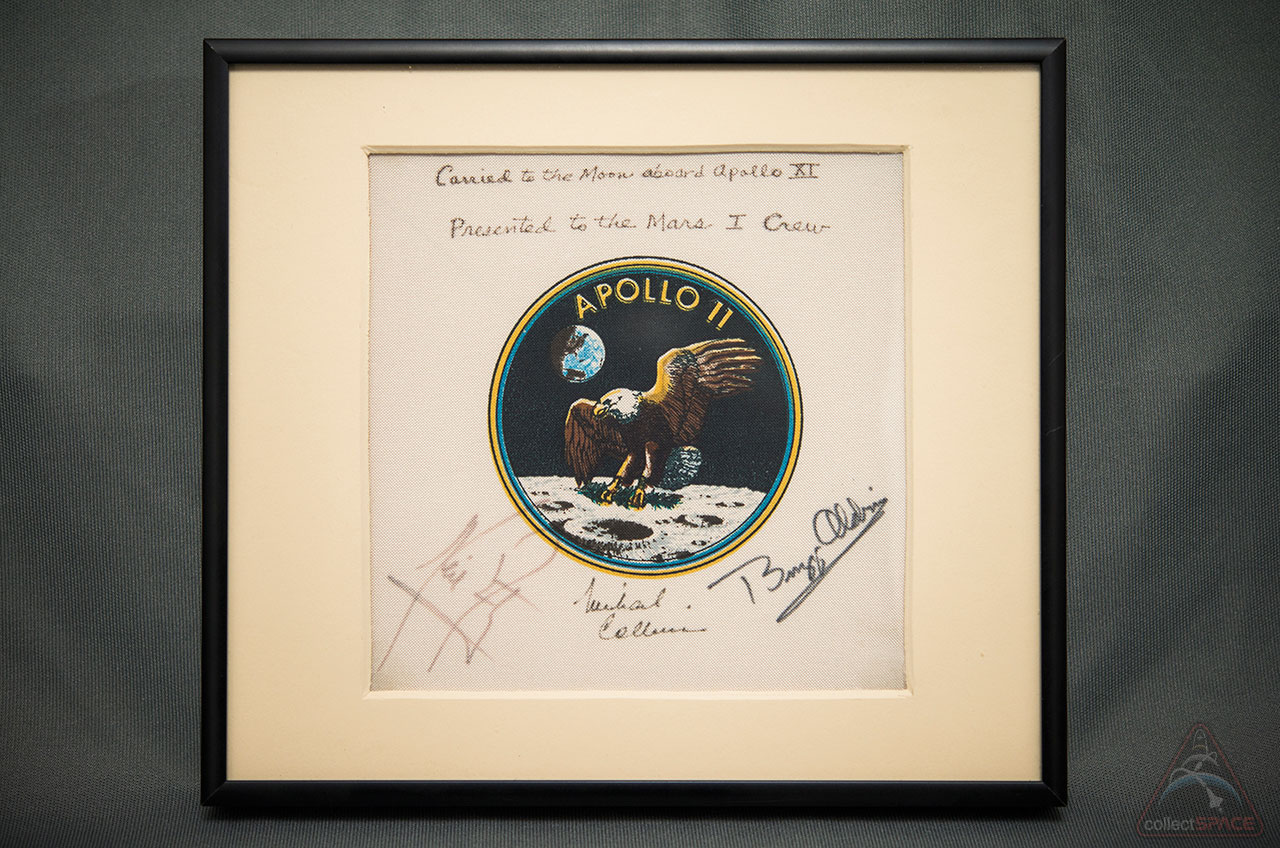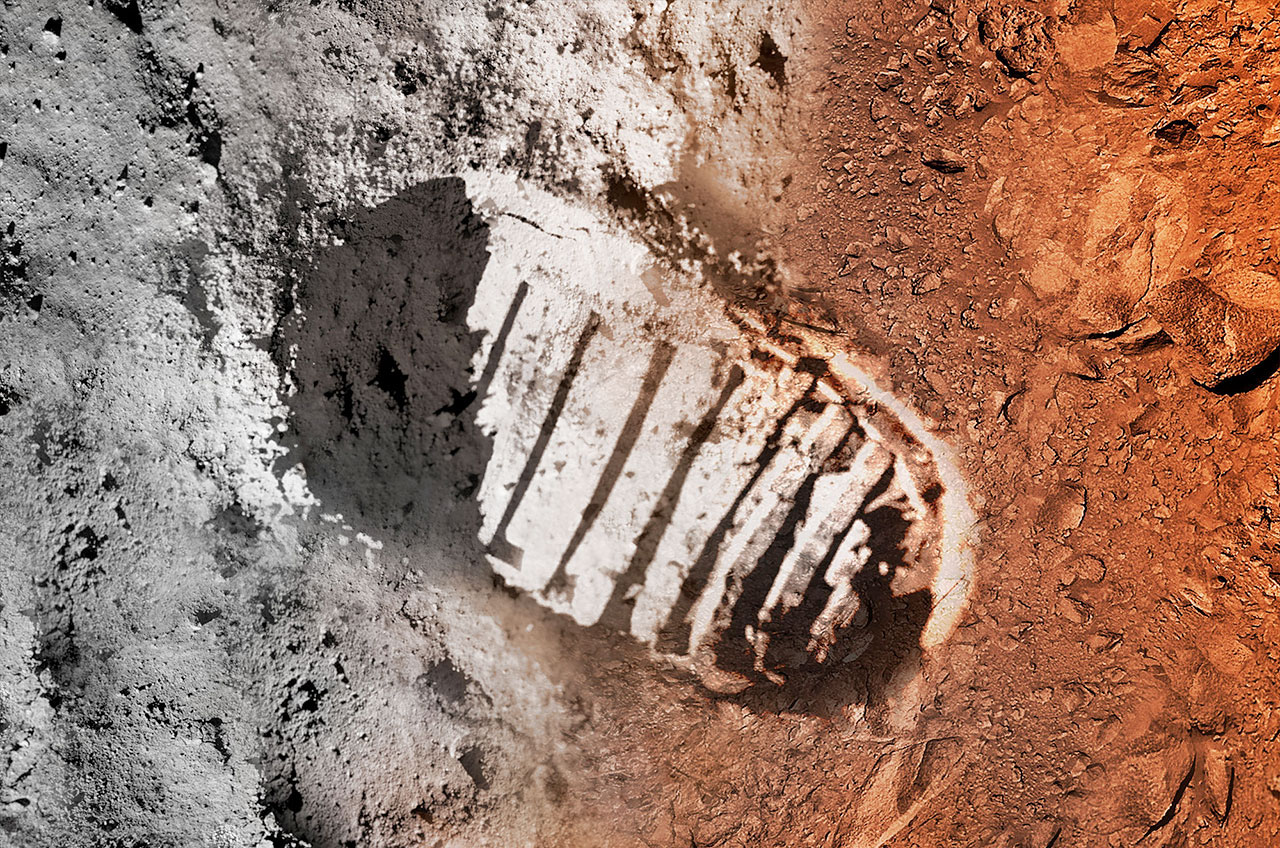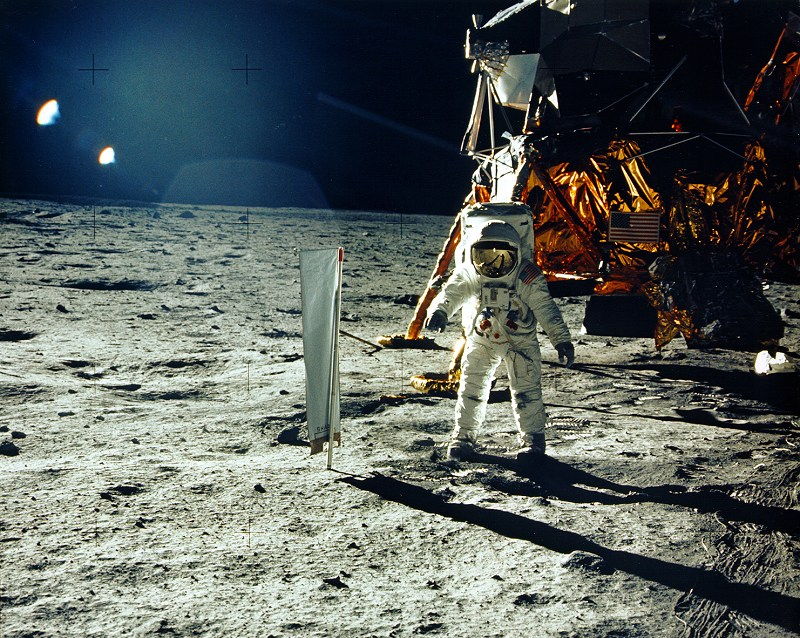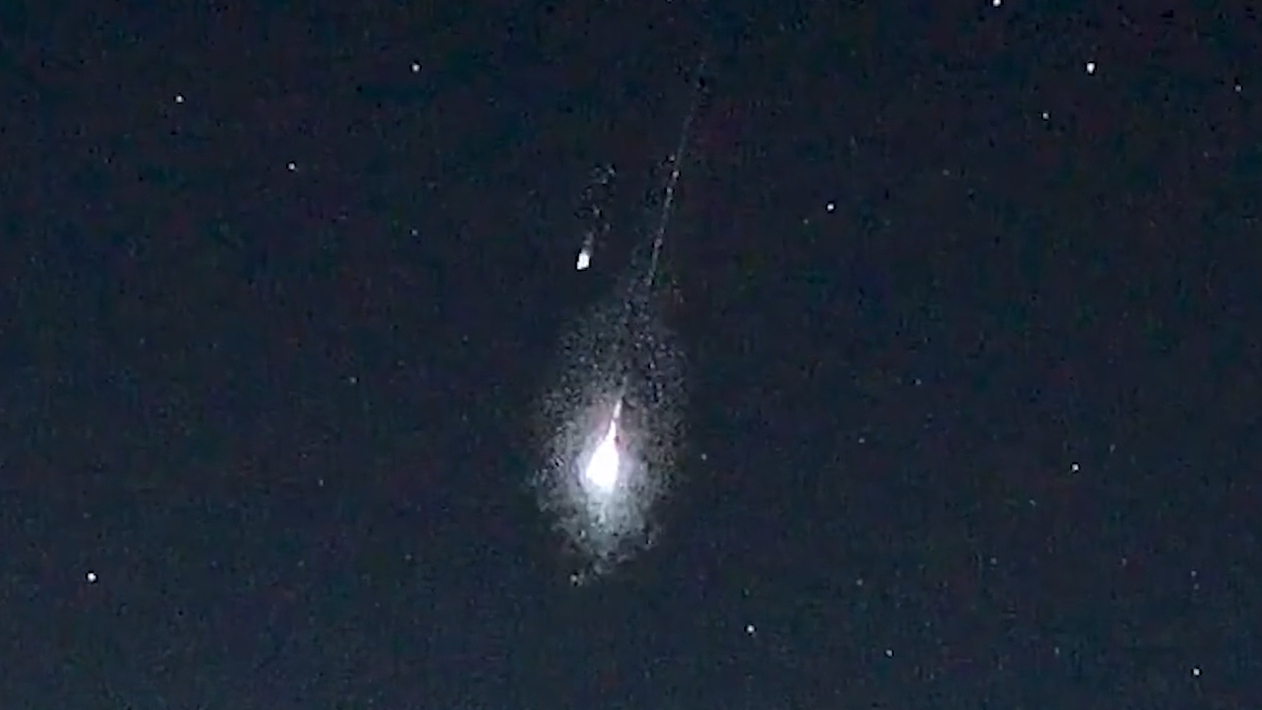Apollo 11 Patch Flown on 1st Moon Landing to Launch with Astronauts to Mars

When American astronauts make the next "giant leap" by launching to Mars, they will bring with them a memento from the first moon landing 45 years ago.
NASA on Monday (July 21) will present the Kennedy Space Center in Florida with a mission patch that Apollo 11 crew mates Neil Armstrong, Buzz Aldrin and Michael Collins carried to the moon in 1969, collectSPACE has learned. The patch will be held at the spaceport until the first crew is ready to lift off for the Red Planet on a mission NASA plans for the 2030s.
NASA Administrator Charles Bolden will give the framed emblem to Kennedy Space Center director Robert Cabana during a ceremony to rename the historic Operations and Checkout (O&C) Building for the late Neil Armstrong, the first man to step foot on the moon. Aldrin and Collins will attend the event to deliver remarks paying tribute to their Apollo 11 commander.
"At NASA, we're working on the next giant leap – a human mission to Mars, standing on the shoulders of astronauts Neil Armstrong, Buzz Aldrin and Michael Collins," Bolden said in a recent statement marking the 45th anniversary of the moon landing. "In the spirit of this brave crew, we look forward to a new generation of NASA achievements."
Forty-five years ago Sunday, Armstrong and Aldrin, on the lunar module "Eagle," separated from the Apollo command module "Columbia" crewed by Collins, and descended to the moon's surface. At 4:17:40 p.m. EDT (2017 GMT) on July 20, 1969, the four-legged lander safely touched down at Tranquility Base, where the astronauts then spent two and a half hours outside collecting moon rocks, deploying science experiments and planting the American flag. [Apollo 11 Moon Landing Anniversary: Complete Coverage]
"That's one small step for (a) man, one giant leap for all mankind," Armstrong said as he took his first step on the moon.
The Mars-destined Apollo 11 patch is one of a small lot of emblems that were silkscreened on the same glass fiber cloth that covered the crew's spacesuits and which were flown to the moon as souvenirs for presentation back on Earth. On July 20, 1987, on the 18th anniversary of their mission, Aldrin and Collins gave the patch to then-NASA chief James Fletcher at the Case for Mars conference at the University of Colorado in Boulder.
Breaking space news, the latest updates on rocket launches, skywatching events and more!
"Carried to the moon aboard Apollo 11," Collins inscribed across the top of the Beta cloth patch. "Presented to the Mars 1 crew."
All three astronauts autographed the fabric underneath the iconic emblem, which features an American eagle landing on the moon while grasping an olive branch in its talons.
In 1992, the flown patch was borrowed by the Smithsonian and framed for display to be a part of the National Air and Space Museum's exhibit, "Where Next, Columbus?" which featured a Mars terrain and addressed topics related to a future human mission to the Red Planet. It was returned to NASA's Washington, D.C. headquarters in 2002, with the closing of the museum's hall.
After the emblem's presentation on Monday, the Kennedy Space Center plans to place the patch on periodic display. The astronauts' inscription and signatures have somewhat faded over the years, so care is needed to preserve them for the patch's ultimate journey to Mars.
NASA is now preparing for the first test flight of the Orion, its next-generation space capsule, that it plans will launch astronauts on the first missions beyond Earth orbit since the Apollo moon landings. The agency has set Mars as its ultimate goal for its "next giant leap," preceded by flying to a redirected asteroid and the Red Planet's moons.
And in 2011, the final space shuttle mission delivered a flag to the International Space Station that 30 years earlier had flown aboard STS-1, the shuttle program's first flight. The flag remains on the station today, awaiting the arrival of the first U.S. commercial crewed spacecraft, expected to launch in 2017.
Click through to collectSPACE.com for continuing on-site coverage of the renaming of the Operations & Checkout Building for Neil Armstrong.
Follow collectSPACE.com on Facebookand on Twitter at @collectSPACE. Copyright 2014 collectSPACE.com. All rights reserved.
Join our Space Forums to keep talking space on the latest missions, night sky and more! And if you have a news tip, correction or comment, let us know at: community@space.com.

Robert Pearlman is a space historian, journalist and the founder and editor of collectSPACE.com, a daily news publication and community devoted to space history with a particular focus on how and where space exploration intersects with pop culture. Pearlman is also a contributing writer for Space.com and co-author of "Space Stations: The Art, Science, and Reality of Working in Space” published by Smithsonian Books in 2018.
In 2009, he was inducted into the U.S. Space Camp Hall of Fame in Huntsville, Alabama. In 2021, he was honored by the American Astronautical Society with the Ordway Award for Sustained Excellence in Spaceflight History. In 2023, the National Space Club Florida Committee recognized Pearlman with the Kolcum News and Communications Award for excellence in telling the space story along the Space Coast and throughout the world.



